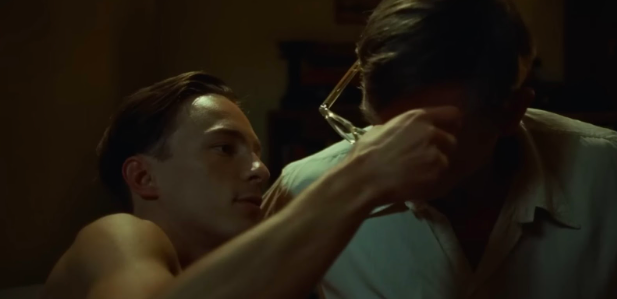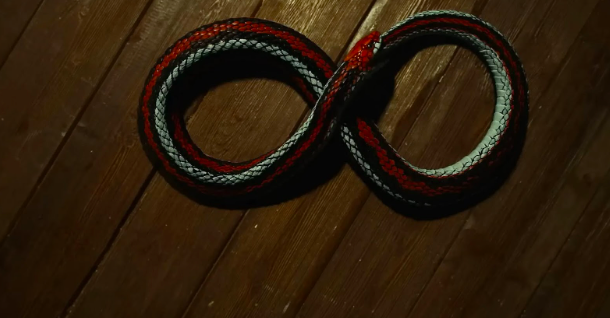The lights come up after a screening of Queer. I look down at my notes: something something… composition… perfection… cinematic sound design… Nirvana… imagery.
Luca Guadagnino proves once again he knows how painful it is to be in love. Oozing with theatricality, Queer is a visual feast featuring perfectly crafted sets of 1950’s Mexico, crinkled linen, cigarette smoke, beer, whiskey, sweat, and one of Daniel Craig’s finest performances yet.

Queer follows Lee (Daniel Craig), an American expatriate with seemingly very little life outside of drinking, smoking and screwing. That is until he meets Eugene (Drew Starkey), an elusive, young, beautiful American soldier. Eugene is the epitome of mystery. And it only makes Lee more infatuated. What begins as an innocent crush soon becomes a mission. In beautiful overlays that appear like double exposures, Lee reaches out to touch Eugene, to stroke his hair or hand, a lucid manifestation of what could be. If only Eugene could love him more; can he or won’t he? If only their brief moments of passion, though beautiful, were not just drunken one-sided flings.
Dainel Craig’s Lee is brash, irreverent and charming. Perhaps that’s the Bond shining through, but it is his gritty, grounding performance that carries the film through insanity. The film’s opening tableaux of reading glasses, guns, notebooks and bedsheets establish the manicured environments that we are about to enter. Or rather, Lee’s internal world. Queer’s editing is frenetic, focused on emotion and determined to make us sink into this world. Its soundtrack is distinctly modern and tailored to Lee’s yearning.
Yes, this is Lee’s world. And for 2 hours we descend into his insanity and fixation on a kind-of-queer-but-not-really young man who didn’t ask to become a symbol of strained, closeted love.
These manicured states of living are Lee’s own romanticisation of a dirty, sticky life, the kind of squalor William S Burroughs originally wrote Queer from. Some would argue Guadagnino has taken great artistic liberty to beautify the Burroughs grit, but the true Burroughs madness lies in Lee’s third act spiral. I won’t give too much away in that regard; Queer’s true beauty lies in its unexpected surrealism.
What begins as a painterly drama becomes a return to classical surrealism. It’s not that the images themselves are distorted, like the melting clocks of Dali, but more that the form remains realistic but the symbols become more complex; like the strange and layered iconography of 15th century paintings such as The Ambassadors by Hans Holbien. A painting so full of labyrinthine imagery, its meaning is still disputed. But, plainly, it is a realistic painting of two men. Gaudagnino presents us with realism that can still contain a snake literally eating its own tail.

I can’t analyse and explain each image and symbol. I’m not going to pretend I also understand all of them, either. But I feel the emotion behind them. And that’s more important. Let yourself respond to Queer from your body. Melt into it. As Lee says, he wants to speak without talking. So watch without thinking.
“No one is ever done. You are part of everything that has ever lived” says Lee.
We are cyclical.
by Parker C. Constantine
